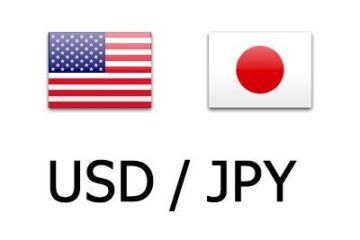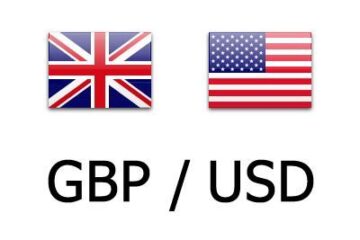To the rest of America, it’s just another Tuesday. But if you grew up in New Orleans, you got an extra holiday that few others get to enjoy: “Fat Tuesday,” more commonly known as Mardi Gras.
While it might be best known for its drunken revelry and random bouts of nudity for those watching it on TV (because, after all, it’s the spicy stuff that attracts the most eyeballs), Mardi Gras is much more than just that. The celebration has a rich, storied history that is deeply meaningful to those who live in New Orleans. But most of all, it’s a reason to grab your wooden ladders and portable chairs, watch some parades, catch some beads, and have fun.
A woman asks for Mardi Gras beads to be thrown from onlookers on the balcony above her.
What is Mardi Gras?
While Mardi Gras is best known in America for its yearly celebration in New Orleans, La., the celebration itself has been around in some form for thousands of years. The French Catholic tradition kicked off its first parade and ball in 1833, funded by aristocrat Bernard de Marigny.
Mardi Gras is French for “Fat Tuesday,” which marked the day before Ash Wednesday, the start of Lent. As Christians traditionally fasted for 40 days and 40 nights, Fat Tuesday was considered the day to feast on rich, fatty foods before the fast began — hence the name.
The Mardi Gras season is marked by two traditions: parades and balls. The parades feature marching bands and fantastical, highly decorated “floats,” which people ride on while throwing things to the crowds. Colorful beads are the best-known throws, but riders are known to also throw doubloons, plastic cups, stuffed animals, toys, and more.
This ornate float was a part of the 2023 Krewe of Okeanos parade during Mardi Gras in New Orleans.
CHANDAN KHANNA/Getty Images
Each parade is put on by a collective called a Krewe, and Mardi Gras balls are specifically held for them. Each Krewe has a king and queen who ride in a place of honor during the parade. The balls are considered high-society events as well as opportunities for debutantes to climb the social ladder. The biggest and longest-running Krewes in New Orleans are Zulu (1916), Endymion (1967), Bacchus (1968), and Orpheus (1993).
Another tradition of Mardi Gras is costumes, typically worn by those who ride in Mardi Gras parades as well as attendees. The celebration’s official colors are purple, green, and gold.
Outside of the U.S., Mardi Gras (also known as Carnival) takes place in Belgium, Germany, Italy, Sweden, and the Czech Republic.
What are the dates for Mardi Gras 2024?
Mardi Gras falls on Feb. 13 in 2024, with the legendary Krewe of Zulu being the first to roll at 8 am. However, there are many parades scheduled to roll before the big day. Check the Mardi Gras New Orleans website for the full listing of all parades.
The 2024 Krewe du Vieux parade took place on January 27, 2024.
Erika Goldring/Getty Images
How long does Mardi Gras last in New Orleans?
Mardi Gras season is observed in different increments of time in different places, but in New Orleans, it begins on Twelfth Night or Jan. 5 and continues through the midnight before Ash Wednesday. Parades and Mardi Gras balls are held throughout this time period, leading up to the big celebration on Fat Tuesday.
Do you have to pay to attend Mardi Gras?
There is no cost to “enter” Mardi Gras in New Orleans, as it’s an ongoing event that takes place all over town. Parades are also free to attend, but expect to pay for parking and premiere seating if you want those options. Naturally, there are also vendors selling food and alcohol all around the city, so you’ll need to bring funds to keep yourself hydrated and fed as the party goes on.
What is the theme for Mardi Gras 2024?
While Mardi Gras 2024 does not have a specific theme, each of its parade krewes do. Endymion’s theme for this year is “Silents are Golden” and will feature musical performances from Sting, Flo Rida, The Mixed Nuts, Groovy 7, and The Wiseguys.
For Bacchus, the theme is “Take a Number Please” and will feature “Entourage” star Kevin Dillon as its “king.”
Krewe Orpheus chose “Music of the Spheres” as its theme this year, with two monarchs as guests of honor: actors Neil Patrick Harris and David Burtka. Musical acts include Taylor Dayne, Big Bad Voodoo Daddy, 12 South, and The Mixed Nuts.
The Zulu Krewe’s theme this year is “Celebrations and Libations Zulu Style,” and will feature Big Shot, Witch Doctor, and Mr. Big Stuff.
When should I go to New Orleans for Mardi Gras?
The Mardi Gras season kicks off the first week of January, so you can go anytime from then until Fat Tuesday itself. However, if you want to see the biggest krewes roll, those happen starting the weekend before, with Endymion on Feb. 10, Bacchus on Feb. 11, Orpheus on Feb. 12, and Zulu on the morning of Mardi Gras day, Feb. 13.
How much money does Mardi Gras bring to New Orleans?
The short answer is — a lot. Per the Mardi Gras Economic Impact Study done in 2023 by Tulane Economics professor Toni Weiss, the total direct and indirect impact of Mardi Gras on the New Orleans economy is $891 billion, with the net fiscal benefit to the city (including franchise value) estimated at $28 million.
New Orleans makes $9.1 billion per year from the tourism industry per the Louisiana office of Tourism and employs 62,000 people in hospitality roles.


